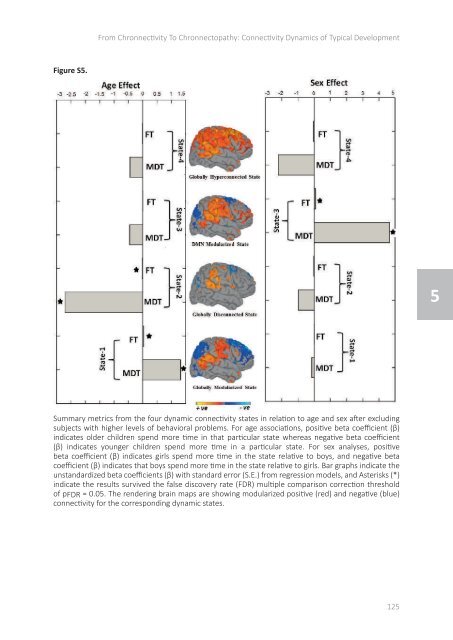On the Spectrum
2lm5UyR
2lm5UyR
Create successful ePaper yourself
Turn your PDF publications into a flip-book with our unique Google optimized e-Paper software.
From Chronnectivity To Chronnectopathy: Connectivity Dynamics of Typical Development<br />
Figure S5.<br />
5<br />
Summary metrics from <strong>the</strong> four dynamic connectivity states in relation to age and sex after excluding<br />
subjects with higher levels of behavioral problems. For age associations, positive beta coefficient (β)<br />
indicates older children spend more time in that particular state whereas negative beta coefficient<br />
Figure (β) indicates S5. Summary younger children metrics spend from more <strong>the</strong> four time dynamic in a particular connectivity state. For states sex in analyses, relation positive to age<br />
beta coefficient (β) indicates girls spend more time in <strong>the</strong> state relative to boys, and negative beta<br />
and<br />
coefficient<br />
sex after<br />
(β) indicates<br />
excluding<br />
that boys<br />
subjects<br />
spend<br />
with<br />
more time<br />
higher<br />
in <strong>the</strong><br />
levels<br />
state<br />
of<br />
relative<br />
behavioral<br />
to girls. Bar<br />
problems.<br />
graphs indicate<br />
For age<br />
<strong>the</strong><br />
associations, unstandardized positive beta coefficients beta coefficient (β) with standard (β) indicates error (S.E.) older from children regression spend models, more and time Asterisks in that (*)<br />
indicate <strong>the</strong> results survived <strong>the</strong> false discovery rate (FDR) multiple comparison correction threshold<br />
particular of pFDR = 0.05. state The whereas rendering negative brain maps beta are coefficient showing modularized (β) indicates positive younger (red) and children negative spend (blue)<br />
connectivity for <strong>the</strong> corresponding dynamic states.<br />
more time in a particular state. For sex analyses, positive beta coefficient (β) indicates<br />
girls spend more time in <strong>the</strong> state relative to boys, and negative beta coefficient (β)<br />
indicates that boys spend more time in <strong>the</strong> state relative to girls. Bar graphs indicate <strong>the</strong><br />
unstandardized beta coefficients (β) with standard error (S.E.) from regression models,<br />
and Asterisks (*) indicate <strong>the</strong> results survived <strong>the</strong> false discovery rate (FDR) multiple<br />
1256


